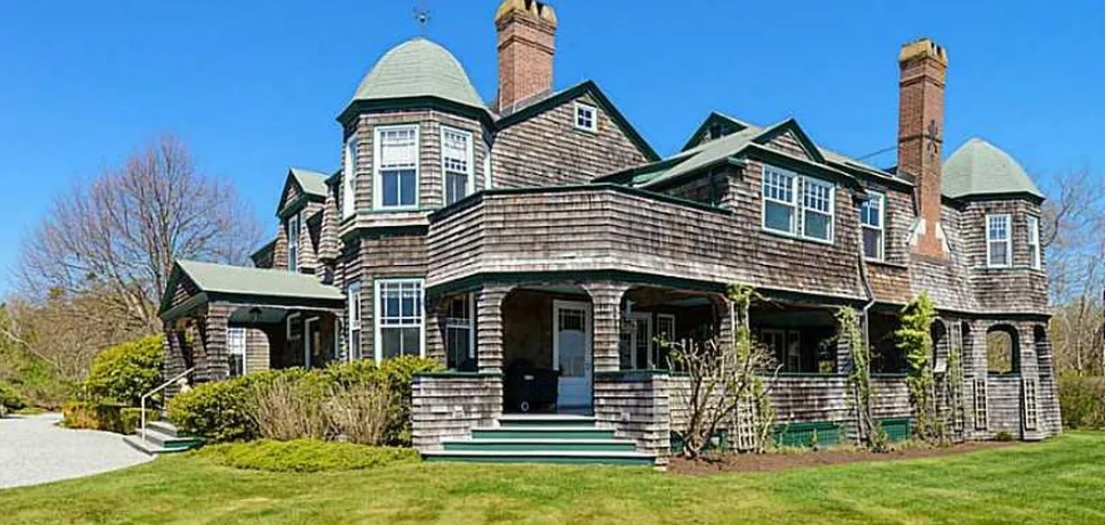Jamestown can be thought of as two islands connected by a narrow spit of land known as Mackerel Cove Beach. Perhaps at one time it actually was two islands. You’ll probably reach Jamestown by coming over the bridge from Newport, or over the bridge from North Kingstown. These bridges put you on the “main island,” the larger land-mass. If you drive to the southern tip of the smaller land-mass, you get to Beavertail State Park, one of Jamestown’s main attractions. Beavertail has trails on both east and west; the trails have views of Beavertail’s many points and coves. A trail description can be found in Ken Weber’s book on RhodeIsland trails.
The picture below shows Jamestown’s two “islands” and two bridges.

If you enjoy geology, Beavertail has much to offer, including a meeting of two plates/formations near the lighthouse (technical info on Beavertail geology here and here; general info on RhodeIsland geology here). You’ll probably find granite with quartz veins, and you might find some folding, where the plates meet and one goes over the other.
Perhaps the most scenic spot in Rhode Island is Jamestown’s Fort Wetherill State Park. Like Beavertail, Wetherill has water views, but the views at Wetherill are broader, more elevated. On the map below, I marked the most scenic spot at Wetherill.
On the above map, I marked the historic windmill with a W; it’s a scenic spot with a good view of Newport Bridge. Just to the south is a small Quaker meeting-house.
Jamestown’s main roads are rather narrow for biking, but traffic is light. You can bike or drive around Fort Wetherill, then north on Dumpling Drive and Racquet Road, then continue north on Walcott Ave. to the ferry dock. You’ll notice that many of the houses are built in the Shingle Style, with shingles that darken with age, and small panes in the upper part of the windows.

52 Newport Street, Jamestown, built 1888